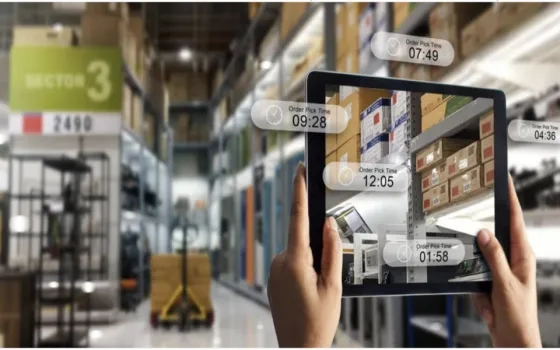History is witness to the fact that Crisis is a great enabler for lifestyle changes and brings with it humbling ‘teachable moments.’ Pandemic provoked a change in behavior not just for the consumers but for the industries too. Though e-commerce was on the rise it took Pandemic to accelerate its growth and led to the entry of new players – especially pharmacies that operated on a traditional model. The Healthcare industry warmed up to telemedicine and online consultation became a new normal.
The last two years saw customers ordering food, groceries, clothes to medicines online. The e-commerce shoppers have increased parcel shipping business and as per Pitney Bowes Parcel Shipping Index Report – 4160 parcels were shipped per second, worldwide. The global parcel volume reached 131.2 billion in 2020 and is expected to reach 232 – 303 billion by 2026.
Many consumers across the globe discovered the convenience of shopping online and the share of eCommerce grew two to five times the rate before COVID-19 – as per the McKinsey Consumer Pulse report. In the U.S. alone the pandemic contributed an extra $218.53 billion to the e-commerce bottom line over the past two years.
What the change entails for the logistics industry
This change in the shopping behavior and the rising customer expectations in a complex and interconnected world present significant growth opportunities and threats for the Logistic industry. Customers and businesses expect the goods to be delivered faster, and flexibly without the delivery costs. Besides, the manufacturing of goods also led to a whole new level of customization, which puts added pressure on the industry. With companies like Amazon providing delivery within a day or within 4 hours of the ordering of the products by default customers expect the same from other companies. Inefficient operating systems and profitability have put a strain on logistic players.
Also, the last two years reaffirm the fact that supply chain resilience is more critical than ever for companies to stay in the game. Digitization and evolving customer expectations are driving growth, but the low pace of digital adoption poses a huge threat to the industry. If the companies don’t act in time, it could have catastrophic effects on the players.
As more and more people will continue to buy stuff online, the focus will be on the customer’s experience in Logistics. This will play a crucial role in determining the success of any company. What customers need is a faster time to market for their products, reduced or no returns of the goods, and customized products/experiences.
While the Manufacturing industry is catching up with other industries such as Retail that are driven by digital technologies, logistics is still lagging. Besides, IIoT and Industry 4.0 allow manufacturers to redefine how they operate – starting from their shop-floor operations to reaching their customers. All of this impact the logistics industry.
The industry can combat these challenges by accelerating digital innovation and adoption. The new entrants are using new technologies to reach digital customers and disrupting the industrial landscape.
Traditional logistics efforts do not reap benefits in the digital era and companies operating in traditional setup are required to adopt digital tools that enable speed, immediacy, ubiquity, and self-service.
En-route Digital – 4.0 logistics paradigm
To survive and thrive in the digital age, the industry must look at these key themes that will play a crucial role in digital transformation over the next decade.
Data-driven Information Services | Logistics of Things
Big data and analytics is the wizard that can provide companies with real-time analytics and clear visibility on day-to-day affairs – starting from the production phase – tracking machines, and products to the last mile delivery of the goods. Continuous monitoring of devices allows for fixing anomalies that may arise, and course correction by taking timely decisions with better insights. It helps in providing quality delivery and accurate status of shipment. Organizations can leverage big data and analytics to identify and fix inefficiency in operations, improve forecasting, analyze customer needs, and drive innovation.
It will empower companies to make data-driven decisions by uncovering patterns, analyzing historical data, and generating insights. Through the help of descriptive, diagnostic, predictive, prescriptive, and cognitive analytics companies can get comprehensive and rapid insights in real-time to address a range of issues from being vigilant about fluctuating production to anticipating demand, from preparing advanced machine maintenance to utilizing the workforce effectively – supply chain analytics will optimize the overall performance of the companies.
Predictive analytics plays a critical role in managing demand and supply. By identifying patterns and studying past data, and current models, shipping companies can study the consumption of the product and thereby predict the demand. It improves the delivery quality and allows the operations team to prepare in advance by studying weather changes and detecting bad to worse instances.
Not missing the critical aspect of route optimization. Utilizing IoT, Big data, and integrating platforms can help companies in giving a clear view by gathering data from various sources. For example – data can be captured right from GPS to weather changes which can be integrated with fleet data and delivery schedules that can be later used to find the quickest and optimal delivery route. There are a plethora of BI solutions that are being utilized by food delivery and e-commerce companies to efficiently manage their supply chain, delivery, and operations.
All of these can be managed effectively by an advanced Logistic Control Tower that acts as a central piece for controlling and monitoring hubs, track and trace information with clear roles and responsibilities, and visibility across all the touchpoints.
Connected Supply Chain Ecosystem – Powered by technology
More and more companies are forced to embrace eCommerce due to growing consumer demands and pandemic-led disruptions. For example – pharmacies for decades have operated on traditional in-store purchase models, but the restrictions and fewer in-store visits have forced these companies to adopt e-commerce. It also provides third-party logistics (TPL) companies to innovate and find new ways to meet customer expectations. New technologies can help Logistics services providers to create a connected supply chain to provide a seamless, top-quality solution to their customers. A connected supply chain ecosystem powered by new technologies such as blockchain, advanced analytics, robotics, drones, the IoT, and augmented reality can reap benefits for both TPL and customers.
Logistics companies can benefit a great deal from utilizing AI and ML. At any given point, the supply chain creates an enormous amount of structured and unstructured data; these data can be utilized by the companies to identify patterns and improve their operations drastically by evaluating and utilizing insights derived from each supply chain link. These patterns can be utilized for various use cases like transport management, production planning, forecasting demand, maintaining inventory levels, supply quality, and more. ML gives supply chain companies resilience through critical insights for minimizing supplier risk, enhancing performance, and reducing freight costs.
IoT and smart sensors enable companies to improve warehouse efficiency through real-time alerts based on rules defined for temperature, humidity for storage condition monitoring and other metrics and more importantly end to end traceability of goods across all the points of the entire supply chain, forecasting movement, and planning of goods, locating goods and proper contingency plan.
Robots, cobots, and AGVs are of great assistance for warehouse workers and have capabilities to drastically improve efficiency and productivity. Besides autonomous robots can work consistently and reduce rework, risk, errors, streamline fulfillment, optimize picking and sorting, and increase visibility across the supply chain. Moreover, robots provide a competitive edge to companies and create a perfect collaborative environment while working alongside humans.
Riding on the disruption wave
There are no two ways that tomorrow’s supply chain will be an end-to-end connected ecosystem: a mix of external integration and end-to-end orchestration. Investing in digital solutions and technology will allow companies to prepare for next-level planning in real-time for better execution. Digital champions are already operating on end-to-end supply chain planning to face uncertainties and they believe in investing in digital solutions and creating connected and automated supply chain ecosystems to survive in disruptive times.
About the Author: Hariharan Ramakrishnan leads the Digital and Analytics services at Motherson Technology Services Limited




















